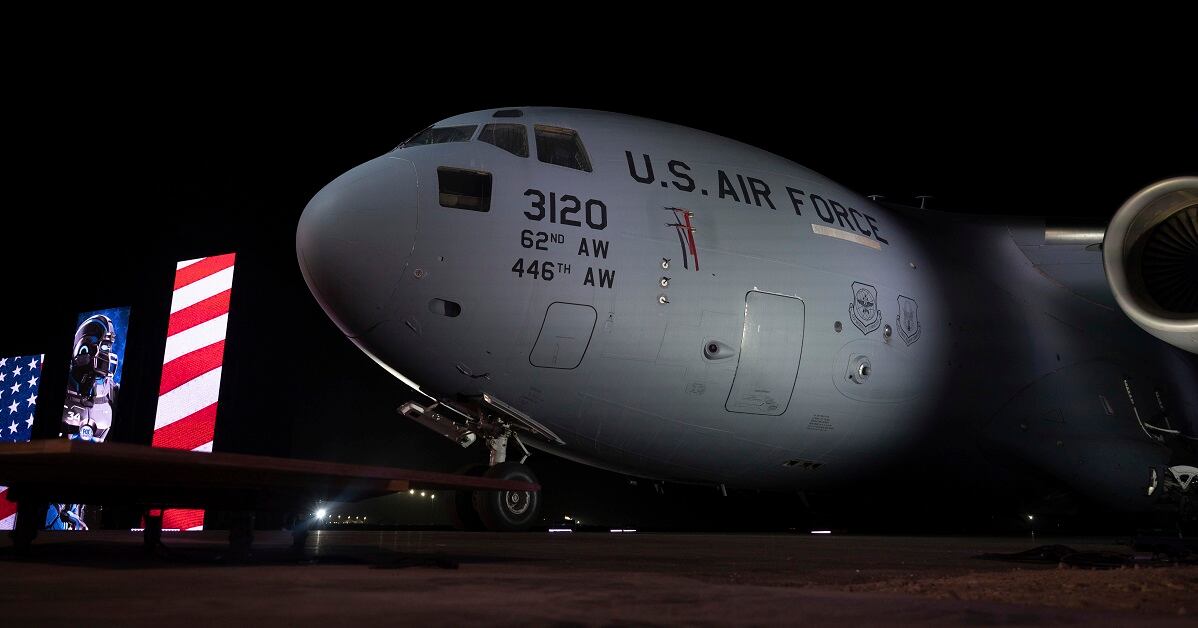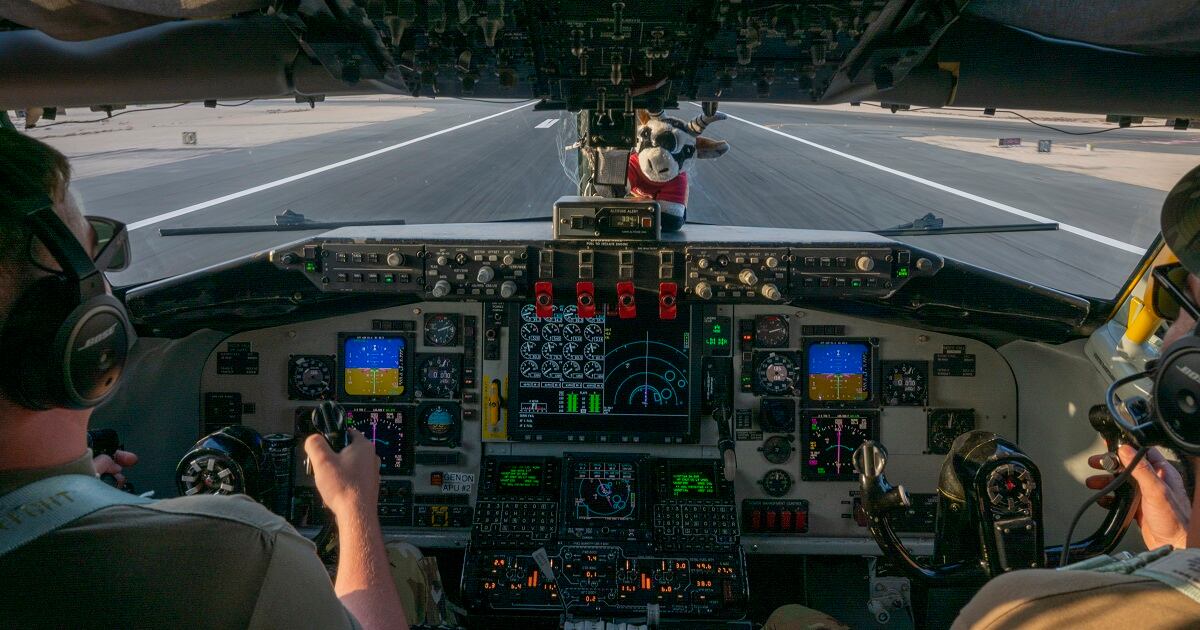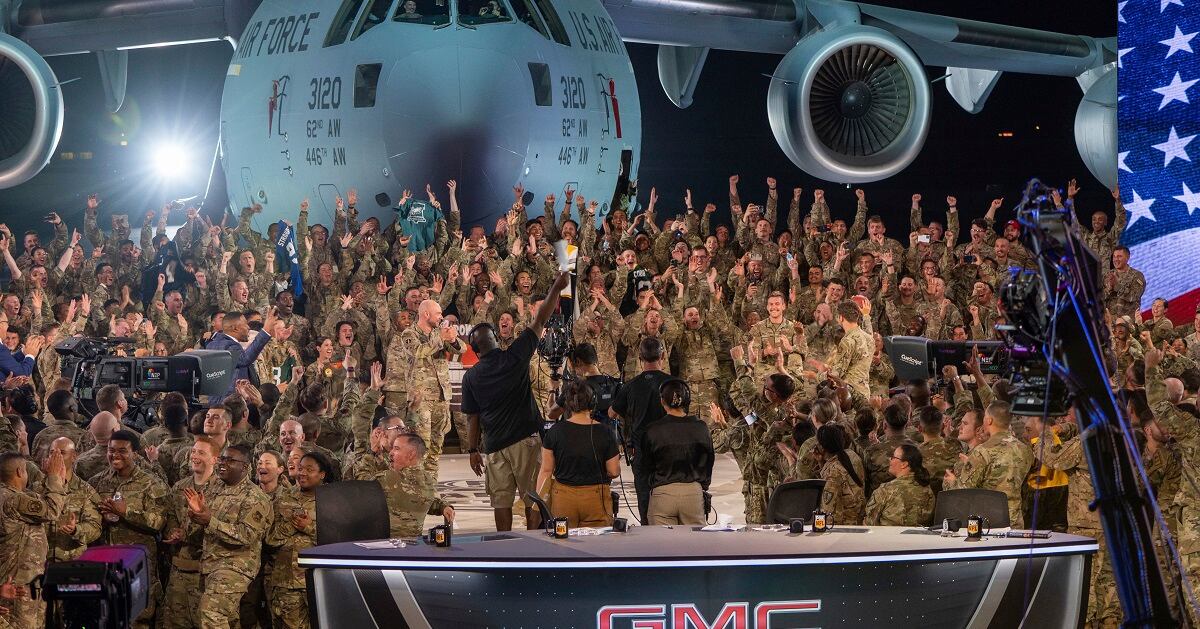AL-UDEID AIR BASE, Qatar — As World Cup fans throng stadiums across Qatar, about 8,000 American troops stationed just nearby watch over the airspace of the tumultuous Middle East from a major base run by this energy-rich nation.
Built on a flat stretch of desert about 20 miles southwest of the Qatari capital Doha, Al-Udeid Air Base once was considered so sensitive that American military officers identified it as only being somewhere “in southwest Asia.”
Today, the sprawling hub is Qatar’s strategic gem, showcasing the Gulf Arab emirate’s tight security partnership with the United States, which now considers Doha a major non-NATO ally.
At the height of U.S. wars in Afghanistan, Iraq and Syria, more than 10,000 troops called the base and other sites in Qatar home. That number has dropped by a fifth since the Biden administration began drawing down forces in the Mideast to focus on the so-called Great Powers competitions with China and Russia.
But the Qataris have continued to pour money into the base — more than $8 billion since 2003. On a visit Friday, Associated Press journalists saw a new barracks and dining hall as airmen discussed other improvements on the way. And airmen said the creation of a new task force focused on drones and other off-the-shelf battlefield technology at Al-Udeid shows that Washington is there to stay, despite fears to the contrary.

“There is a tremendous commitment from the U.S. Air Force to this region,” Air Force Lt. Col. Erin Brilla told the AP. “We are staying as an enduring capability.”
Al-Udeid’s birth and growth mirrors the “forever wars” that followed the Sept. 11 attacks in New York and Washington by al-Qaida. As Saudi Arabia asked American forces to leave the kingdom, Qatar offered Al-Udeid, built at an estimated initial cost of $1 billion.
Al-Udeid soon became the forward headquarters of the U.S. military’s Central Command. Its Combined Air Operations Center oversees combat missions, surveillance flights and drones across the Mideast, North Africa and Asia.
While the “forever wars” wound down, conflicts still rage across the region. As tensions with Iran run high, the U.S. and its allies are looking for ways to counter the low-cost drones employed in the region by Tehran and its militia allies, like Yemen’s Houthi rebels.
The Air Force’s new Task Force 99, newly stationed al Al-Udeid, is focused on countering them — or imposing the same “dilemmas” on militias that they do on the U.S. when they force allies to fire a “$1 million missile versus a $1,000 drone,” Brilla said.

That’s a real-world example. The Saudi military has fended off most of the Houthis’ barrages with its American-made Patriot surface-to-air missile system, typically firing two missiles at an incoming target. That has become expensive and inefficient, as each Patriot missile costs more than $3 million and the kingdom’s supply has run low.
Task Force 99 follows a similar force in the U.S. Navy’s 5th Fleet, which dispatches drones into Mideast waters. Like the Navy, the Air Force wants to focus on widely available off-the-shelf technology it could share with allied nations and not fret about losing, as opposed to the $32 million MQ-9 Reaper drones that have flown out of Al-Udeid in the past.
For Qatar, hosting the base provides protection in a fractured region, allowing it to defy its neighbors. Just two years ago, Saudi Arabia, the United Arab Emirates, Egypt and Bahrain mounted a boycott on Qatar, severing trade and travel links. Iran, which shares a huge natural gas field with Qatar, sits just across the waters of the Persian Gulf.
As the shared hub for the Qatari Emiri Air Force, the U.K. Royal Air Force and Central Command, the base boasts parking lots of C-17 transporters and the long runways to accommodate the heaviest bombers taking off in the desert heat that can reach 122 degrees in the summer. It can feel like a self-contained bubble, albeit one with a Burger King, a Pizza Hut and a gym.
Even so, World Cup fever is seeping onto the base — a rare dose of the outside world for the U.S. troops typically more engaged in faraway wars than Qatar’s diversions. Signs in Arabic promote the World Cup. American troops said they often drive out to the eight stadiums in and around Doha to root for the United States national team when they get the time, with one service member even earning a reputation as a World Cup fanatic after attending seven matches.

“I am through and through very excited to see us compete and put their heart and souls on the field, just like our airmen here putting their hearts and souls into the mission,” said Air Force Capt. Kayshel Trudell, who saw the U.S. beat Iran 1-0 earlier this week at the stadium, where members of the Air Force Band crooned acoustic covers.
She also said she’d be decked out in red, white and blue, cheering on the U.S. at its match against the Netherlands on Saturday — the country’s chance to reach the quarterfinals for the first time since 2002.
Al-Udeid’s FOX Sports Bar, the base’s main watering hole, broadcasts the tournament, allowing troops passionate about soccer to follow the matches. FIFA has granted permission to the Defense Department’s American Forces Network to air the matches.
“It’s an exciting time to be here in Qatar with the World Cup right down the road,” Brilla said, adding that “just about every TV” in the command center shows the matches. She paused, apparently reflecting on the many screens tracking the sky. “Not the ones monitoring the air picture, but the others.”





